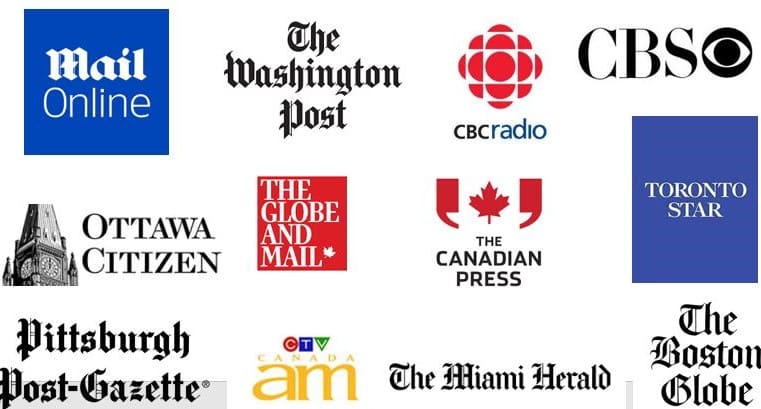 Effective table management in a restaurant is about improving guest flow, generating income, and guaranteeing a flawless dining experience—it is not only about filling seats. A well-considered restaurant seating strategy can help lower wait times, increase service efficiency, and make the dining environment more fun.
Effective table management in a restaurant is about improving guest flow, generating income, and guaranteeing a flawless dining experience—it is not only about filling seats. A well-considered restaurant seating strategy can help lower wait times, increase service efficiency, and make the dining environment more fun.
Poor table reservation management causes many restaurants to battle with long waitlists, ineffective seating configurations, or missed income potential. Whether it’s a high-turnover casual restaurant or a formal dining establishment, a disciplined seating arrangement makes all the difference. Even small details, like strategically placing a reserved sign on tables, can help streamline seating assignments and prevent confusion for both guests and staff.
Technology is changing how restaurants manage their tables, from digital reservation systems to real-time table management systems that improve visibility and coordination. This paper investigates best practices and creative ideas for increasing table turnover, seating efficiency, and a seamless experience for staff and visitors.
Understanding Restaurant Seating Dynamics
A well-structured restaurant seating strategy is essential for balancing guest satisfaction with operational efficiency. The way tables are arranged, assigned, and turned over directly impacts revenue, staff workflow, and the overall dining experience.
Key Factors Influencing Seating Efficiency
- Table Sizes and Configurations – The combination of two-tops, four-tops, and larger tables affects the efficiency of seating guests, particularly during busy times.
- Guest Turnover Rates – Restaurants with high turnover thrive on quick table resets, whereas fine dining venues focus on extended visits and tailored service.
- Reservation Patterns vs. Walk-Ins – Balancing the correct mix guarantees that no group waits excessively, preventing empty tables during peak times.
- Table Allocation and Service Flow – An effective restaurant seating system prevents servers from being overloaded in one section while keeping other areas manageable and underutilized.
Balancing Walk-Ins and Reservations
Often, restaurants find it difficult to mix walk-in customers with pre-booked seating. It’s possible to either overbook or leave tables empty without a good table management system. A structured table reservation management process can help:
- Set aside a percentage of tables for walk-ins to accommodate spontaneous diners.
- Use reservation technology to predict peak demand and adjust table allocations accordingly.
- Implement waitlist solutions that allow guests to receive updates via SMS or apps, reducing frustration.
Understanding these dynamics is the first step in crafting a seating strategy that improves guest flow while ensuring tables are always optimally occupied.
Smart Reservation and Walk-In Strategies
To guarantee the best table use, a good restaurant table management system must balance walk-ins with reservations. While an ineffective walk-in system may cause long queues and annoyed visitors, improper handling of reserves might cause empty tables at busy times. Structured table reservation management systems can greatly improve effectiveness.
Finding the Right Balance Between Reservations and Walk-Ins
- Pre-booking advantages: Reservations help predict guest flow, allowing better staffing and table assignments. This is especially beneficial for high-end dining or special events.
- Walk-in flexibility: Reserving some tables for walk-ins makes sure spontaneous guests feel welcome and helps maintain the restaurant’s lively atmosphere.
- Hybrid models: Numerous contemporary restaurants integrate seating arrangements with AI-powered reservation systems that adapt to demand in real time.
Handling No-Shows and Last-Minute Cancellations
- Implement reservation deposits for high-demand time slots.
- Use waitlist apps that allow guests to confirm or cancel their spots.
- Optimize overbooking strategies (similar to airlines) by predicting typical no-show rates.
Leveraging Technology for Seamless Reservations
Many restaurants now use table management systems integrated with reservation platforms to automate the booking process. These tools help by:
- Offering real-time updates on availability.
- Sending automated reminders to reduce no-shows.
- Enabling staff to manage table turnover efficiently.
Strong restaurant seating rules help businesses provide an excellent service that reduces wait times, maximizes visitor flow and increases income by means of minimum wait times.
Optimizing Table Layouts for Different Business Models
The manner in which a restaurant seats its customers determines its efficiency and guest experience. Underused space, slower service, and bottlenecks resulting from a poorly planned structure can all result from this. Restaurants must take into account their ideas, customer flow, and operational requirements if they are set up effectively.
Tailoring Layouts to Different Dining Styles
- Fine dining – Prioritizes comfort, ambiance, and privacy, often with larger tables and more space between them.
- Casual and fast-casual – Focuses on quick table turnover, with flexible seating arrangements and a mix of small and communal tables.
- High-volume establishments – Take advantage of a modular design that enables tables to be merged or detached as required.
Maximizing Space Without Sacrificing Comfort
- Arrange tables to maintain smooth pathways for both guests and servers.
- Use a mix of table sizes to accommodate different party numbers efficiently.
- Consider booths, counter seating, or bar areas to make use of underutilized space.
An effective layout strikes the right balance between maximizing occupancy and maintaining an enjoyable atmosphere for diners.
Strategic Seating for Better Guest Flow
An efficient seating strategy starts with understanding guest patterns. Restaurants need to consider factors like table sizes, average dining times, and peak-hour demand to prevent bottlenecks and long wait times. Proper planning can help:
- Balance reservations and walk-ins. Overreliance on one can hurt revenue. Allocating space for both ensures steady table turnover.
- Reduce no-shows and cancellations – Deposit-based reservations and automated reminders keep bookings reliable.
- Enhance flexibility – Modular tables that can be rearranged based on party size help maximize space.
Smart seating arrangements improve guest experience while allowing staff to work more efficiently.
Real-Time Table Management and Technology Integration
Effective table management isn’t just about assigning seats—it’s about ensuring a smooth transition between guests. In high-traffic settings, hosts, servers, and kitchen staff must work together to keep operations seamless.
- Live table tracking – Digital seating charts provide real-time updates on availability and estimated dining times.
- Predictive waitlist management – Guests can sign up remotely, reducing in-house congestion.
- Automated notifications – Text-based alerts minimize frustration and keep guests engaged while waiting.
Technology is reshaping how restaurants manage their seating, helping them fill tables faster and reduce operational inefficiencies.
Optimizing Layouts Without Sacrificing Comfort
Table layout directly affects both service speed and customer satisfaction. While maximizing seating capacity is important, overcrowding can lead to a poor dining experience. Key considerations include:
- Table variety – A mix of two-tops, four-tops, and communal seating accommodates different party sizes efficiently.
- Bar and counter seating – Ideal for solo diners and overflow management during peak hours.
- Strategic pathways – Clear walkways prevent congestion and allow servers to move smoothly.
A well-planned space balances efficiency and ambiance, creating a better experience for both guests and staff.
Peak-Hour Strategies for Better Turnover
High-traffic periods put pressure on seating efficiency. Without a structured plan, delays can frustrate customers and lead to lost revenue. To keep tables moving while maintaining service quality:
- Encourage bar-side waiting – Guests can enjoy drinks or appetizers while they wait, making the experience more enjoyable.
- Streamline table resets – Pre-bussing and coordinated clearing ensure faster turnovers without making guests feel rushed.
- Analyze dining duration trends – Tracking average meal times helps predict turnover rates and plan seating accordingly.
Managing peak hours effectively ensures that restaurants maximize table use while keeping service smooth.
A Well-Managed Dining Room: The Heart of a Successful Restaurant
Optimized table management is key to a restaurant’s success. Whether it’s using data to improve seating strategies, integrating technology for real-time tracking, or refining layouts for better flow, every detail contributes to a more efficient operation. By implementing structured seating strategies, restaurants can enhance guest experience, reduce wait times, and ultimately boost profitability.


